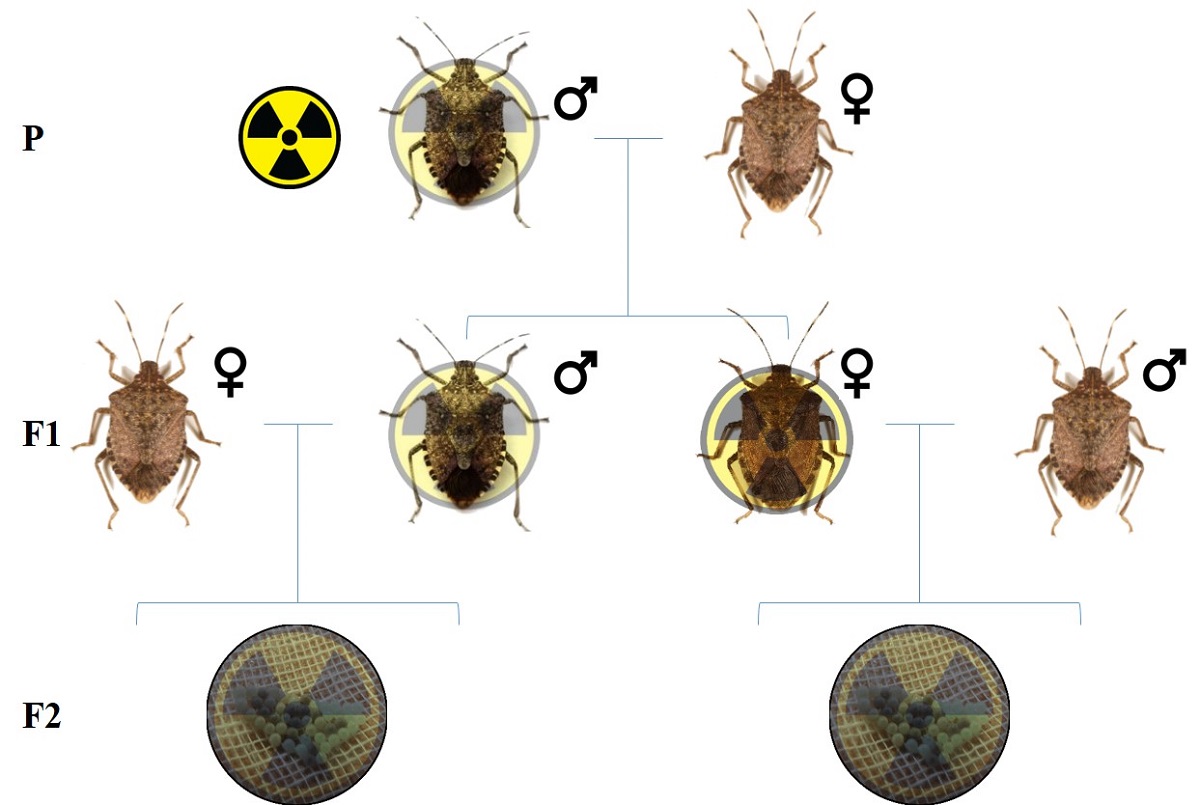The irradiation biology of the brown marmorated stink bug (BMSB, Halyomorpha halys Stål) treated at the nymphal stage was investigated to determine its application for sterile insect technique (SIT). Fifth instar males of BMSB were exposed to gamma-radiation 60Co at different doses of 12, 16, 20, 24 and 64 Gy. Irradiated males were mated with non-irradiated virgin females to assess the longevity of both sexes, female fecundity and fertility of their offspring until the egg stage of the F2 generation. The mortality of each of the developmental stages of the F1 and eggs of the F2 generation was observed to determine whether negative effects from exposure to radiation was inherited. The data indicated that irradiation significantly reduced the lifespan of male insects at doses above 20Gy. Irradiated males did not affect the longevity and fecundity of their female partners, nor either sex of their resulting progeny, but it did reduce the hatch rate of the eggs at all doses tested. The sterility rates of F1 eggs were 55.6%, 73.3%, 74.1% and 74.1% at doses of 12Gy, 16Gy, 20Gy and 24Gy respectively. Eggs were completely sterile (100%) at a dose of 64Gy with no egg hatch recorded. A low hatch rate of F2 eggs illustrated that negative effects from radiation was inherited by the subsequent generation. The results support the potential for the use of SIT for BMSB management by irradiating the fifth instar male nymphs at 16-64Gy.

